The Aubrac breed has enjoyed somewhat of a renaissance in recent years, becoming one of the fastest-growing breeds in terms of calf registrations.
The number may be low, but, nevertheless, breeders have seized their opportunity and are fully prepared to take their seat at the top table of Irish cattle breeds.
Looking at the calf registration data in 2020, there were 20,160 calves registered to Aubrac sires, with over 50% of these registrations coming from the dairy herd.
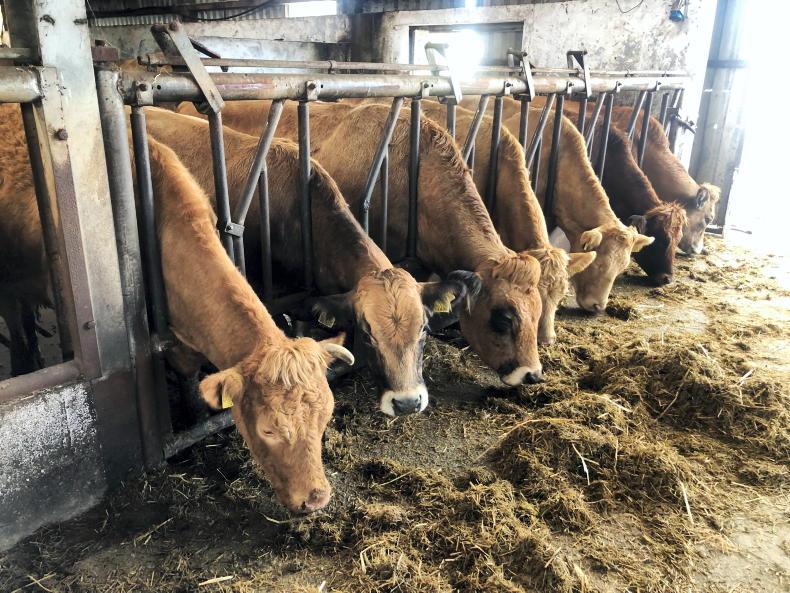
Irish Aubrac Society president James Donnellan said the breed ticks a lot of boxes for people.
“We have seen farmers move to the breed where labour is limited. They are a pretty easy care breed because of their calving ability. Some farmers like them as they can put Culard Charolais or Belgian Blues on them, to aim for very high-quality weanlings.
“I run an organic farm in Co Galway and I find the Aubrac breed really suits my system. I think they fit very well into extensive systems and with the way policy seems to be going, that could be important in the future,” he said.
Aubrac breed statistics
The breed originates from a mountainous region just south of the Massif Central in France and was originally farmed for cheese-making and pulling machinery and tilling land.
This has meant the breed has a certain amount of hardiness and can cope with tough conditions, utilising pasture and mountain grazing to convert otherwise inedible protein into liveweight and, in turn, meat.
Pedigree calf registrations stood at 1,018 in 2020, up from 990 in 2019
While the breed dates back to the 17th century, it wasn’t until 1992 that the breed was first imported into Ireland. Since then, the Irish Aubrac Society has become fully recognised by the Department of Agriculture with its own herdbook and became affiliated to the Irish Cattle Breeding Federation (ICBF).
There are currently 128 pedigree breeders in Ireland. Pedigree calf registrations stood at 1,018 in 2020, up from 990 in 2019. They have been gaining ground with commercial suckler and beef farmers on the back of their maternal ability.
The herd ranks at number two in terms of the top 20% figure on the replacement index at €170, just €20 behind the top breed in poll position, the Salers.
However, it has been on the dairy side of the house where they have seen most interest in the last two to three years. The launch of the dairy beef index in 2019 saw a number of Aubrac bulls come to the top, with two Aubrac bulls occupying two of the top 10 positions on the most recent evaluation.
Breeding
Speaking at the event, Mary Duggan, beef manager with Eurogene AI, said that Aubrac inseminations have been growing steadily over the last two years, with dairy farmers looking to them as an alternative to put more shape into calves without comprising on calving difficulty.
Aubrac is one of our fastest-growing breeds at the moment
Beef programme manager with NCBC Rose Goulding said: “Aubrac is one of our fastest-growing breeds at the moment. Calving ease is the reason they are an option for dairy farmers and it’s important that pedigree Aubrac breeders don’t lose sight of that.
"Aubracs are very good cows to calve and the temptation would be to use harder calving bulls and push things more, but the dairy market will be lost if that happens.”
Rose also stressed the importance of accurate data recording and referenced birth weight recording as an area where all pedigree breeders must get better.
“At home, we have a small pedigree Aberdeen Angus herd and we weighed all our calves this year.
“They ranged from 26-50kg in birth weight. Knowing this provides the breeder with more information on matching bulls to cows and I would expect dairy farmers to hone in on this trait more in the future.”
The McAuliffe system
The farm comprises about 460ac split across five different blocks, four of which are in Kerry and one in Offaly.
“We chose the Aubrac because of its ease of management. We run a busy pig business so wanted a system that would stand on its own feet. We are happy with how our stock are performing with our cows doing a really good job for us,” said Shane McAuliffe.
The farm had a number of issues a few years back with pneumonia in calves, and local vet Sean O’Sullivan from Castle Vets, along with consultant vet Tommy Heffernan, worked with the McAuliffes to put things right.
“I don’t think there was any one issue causing the pneumonia,” commented Sean.
“It was just about getting the basics right. We started with colostrum and worked off those simple rules, 10% of bodyweight within two hours of birth. I know I sound like a broken record, but that’s were a vast majority of herd health issues start.
I often tell lads a bottle of Baytril costs about three round bales of straw – which would they rather spend money on
“We also recommended feeding 1kg/day of soya to cows two weeks before they calve to help colostrum quality.
“Keeping calves warm and dry is very important. I often tell lads a bottle of Baytril costs about three round bales of straw – which would they rather spend money on.
“After that, we implemented a vaccination programme for pneumonia, where calves are vaccinated at a young age and again at weaning and we eliminated a lot of the problems. There is no magic bullet when it comes to herd health, it’s about doing the simple things well,” Sean concluded.
Name: Shane McAuliffe.Location: Parknageragh House, Castleisland, Co Kerry.Farm size: 460ac.Cow numbers: 130 and followers.System: Suckler-to-beef with pedigree bulls sold for breeding.Breeds: Aubrac, Salers and Charolais.
The Aubrac breed has enjoyed somewhat of a renaissance in recent years, becoming one of the fastest-growing breeds in terms of calf registrations.
The number may be low, but, nevertheless, breeders have seized their opportunity and are fully prepared to take their seat at the top table of Irish cattle breeds.
Looking at the calf registration data in 2020, there were 20,160 calves registered to Aubrac sires, with over 50% of these registrations coming from the dairy herd.

Irish Aubrac Society president James Donnellan said the breed ticks a lot of boxes for people.
“We have seen farmers move to the breed where labour is limited. They are a pretty easy care breed because of their calving ability. Some farmers like them as they can put Culard Charolais or Belgian Blues on them, to aim for very high-quality weanlings.
“I run an organic farm in Co Galway and I find the Aubrac breed really suits my system. I think they fit very well into extensive systems and with the way policy seems to be going, that could be important in the future,” he said.
Aubrac breed statistics
The breed originates from a mountainous region just south of the Massif Central in France and was originally farmed for cheese-making and pulling machinery and tilling land.
This has meant the breed has a certain amount of hardiness and can cope with tough conditions, utilising pasture and mountain grazing to convert otherwise inedible protein into liveweight and, in turn, meat.
Pedigree calf registrations stood at 1,018 in 2020, up from 990 in 2019
While the breed dates back to the 17th century, it wasn’t until 1992 that the breed was first imported into Ireland. Since then, the Irish Aubrac Society has become fully recognised by the Department of Agriculture with its own herdbook and became affiliated to the Irish Cattle Breeding Federation (ICBF).
There are currently 128 pedigree breeders in Ireland. Pedigree calf registrations stood at 1,018 in 2020, up from 990 in 2019. They have been gaining ground with commercial suckler and beef farmers on the back of their maternal ability.
The herd ranks at number two in terms of the top 20% figure on the replacement index at €170, just €20 behind the top breed in poll position, the Salers.
However, it has been on the dairy side of the house where they have seen most interest in the last two to three years. The launch of the dairy beef index in 2019 saw a number of Aubrac bulls come to the top, with two Aubrac bulls occupying two of the top 10 positions on the most recent evaluation.
Breeding
Speaking at the event, Mary Duggan, beef manager with Eurogene AI, said that Aubrac inseminations have been growing steadily over the last two years, with dairy farmers looking to them as an alternative to put more shape into calves without comprising on calving difficulty.
Aubrac is one of our fastest-growing breeds at the moment
Beef programme manager with NCBC Rose Goulding said: “Aubrac is one of our fastest-growing breeds at the moment. Calving ease is the reason they are an option for dairy farmers and it’s important that pedigree Aubrac breeders don’t lose sight of that.
"Aubracs are very good cows to calve and the temptation would be to use harder calving bulls and push things more, but the dairy market will be lost if that happens.”
Rose also stressed the importance of accurate data recording and referenced birth weight recording as an area where all pedigree breeders must get better.
“At home, we have a small pedigree Aberdeen Angus herd and we weighed all our calves this year.
“They ranged from 26-50kg in birth weight. Knowing this provides the breeder with more information on matching bulls to cows and I would expect dairy farmers to hone in on this trait more in the future.”
The McAuliffe system
The farm comprises about 460ac split across five different blocks, four of which are in Kerry and one in Offaly.
“We chose the Aubrac because of its ease of management. We run a busy pig business so wanted a system that would stand on its own feet. We are happy with how our stock are performing with our cows doing a really good job for us,” said Shane McAuliffe.
The farm had a number of issues a few years back with pneumonia in calves, and local vet Sean O’Sullivan from Castle Vets, along with consultant vet Tommy Heffernan, worked with the McAuliffes to put things right.
“I don’t think there was any one issue causing the pneumonia,” commented Sean.
“It was just about getting the basics right. We started with colostrum and worked off those simple rules, 10% of bodyweight within two hours of birth. I know I sound like a broken record, but that’s were a vast majority of herd health issues start.
I often tell lads a bottle of Baytril costs about three round bales of straw – which would they rather spend money on
“We also recommended feeding 1kg/day of soya to cows two weeks before they calve to help colostrum quality.
“Keeping calves warm and dry is very important. I often tell lads a bottle of Baytril costs about three round bales of straw – which would they rather spend money on.
“After that, we implemented a vaccination programme for pneumonia, where calves are vaccinated at a young age and again at weaning and we eliminated a lot of the problems. There is no magic bullet when it comes to herd health, it’s about doing the simple things well,” Sean concluded.
Name: Shane McAuliffe.Location: Parknageragh House, Castleisland, Co Kerry.Farm size: 460ac.Cow numbers: 130 and followers.System: Suckler-to-beef with pedigree bulls sold for breeding.Breeds: Aubrac, Salers and Charolais. 





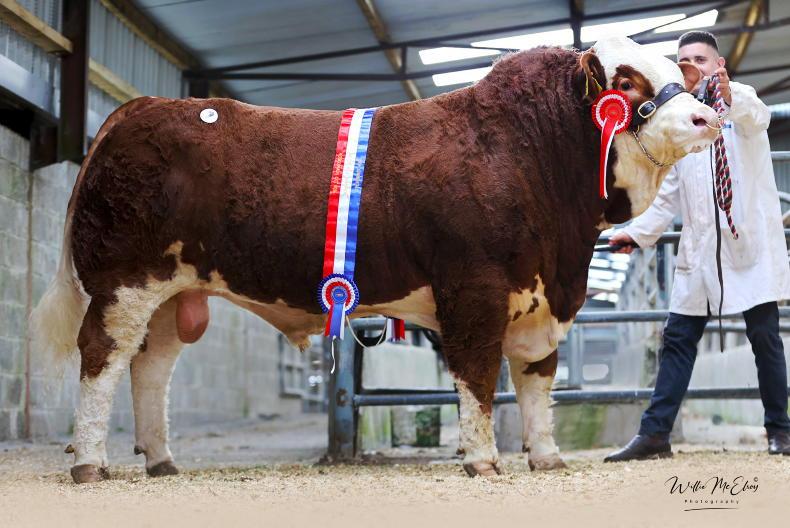

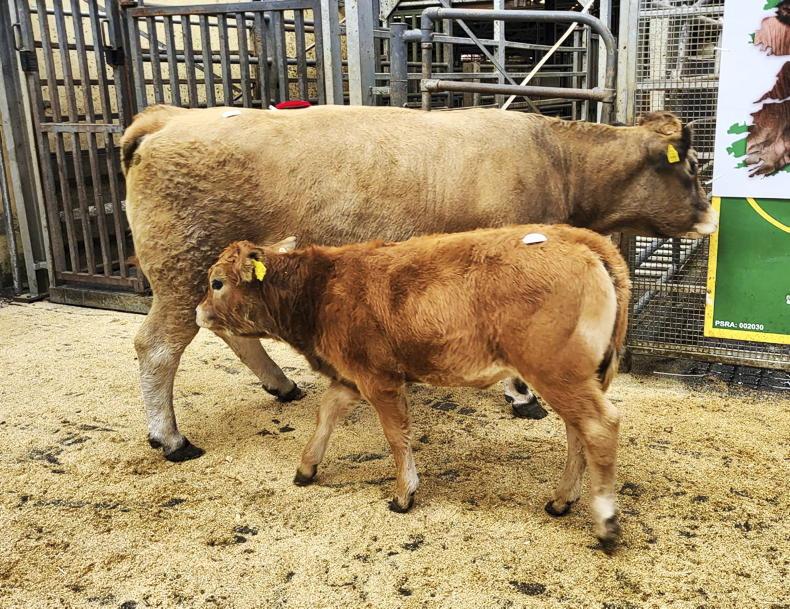
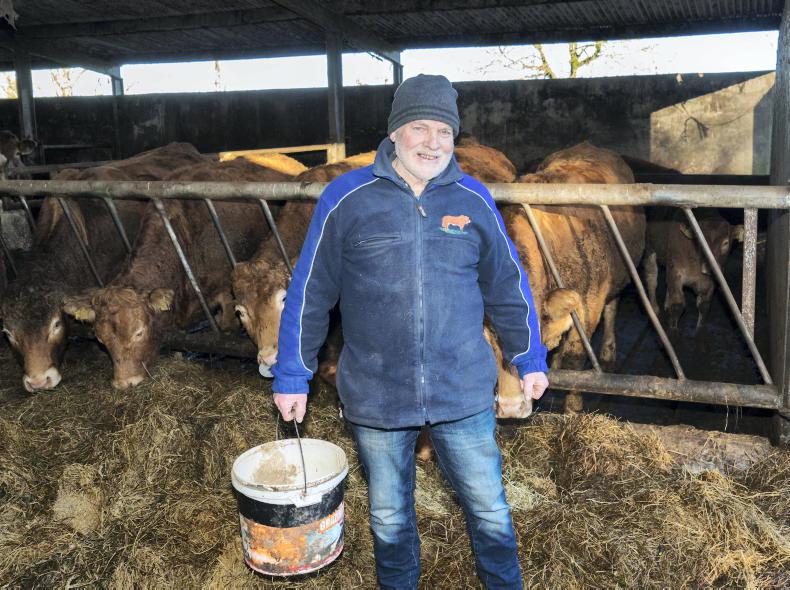
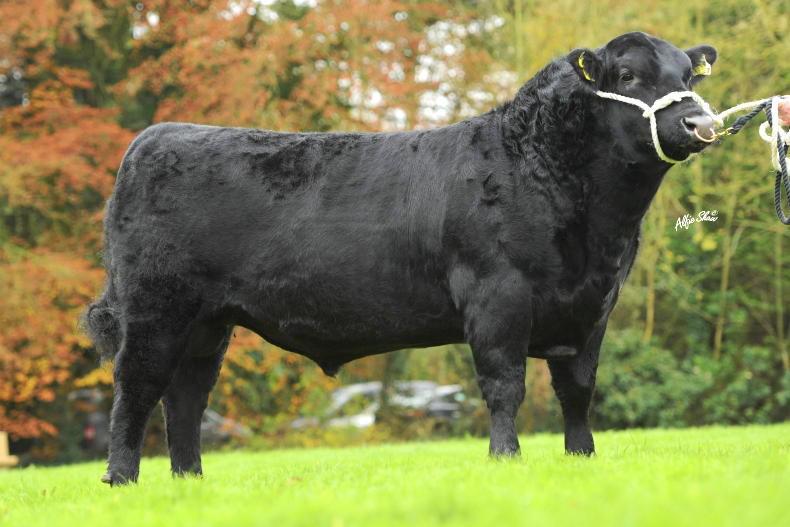
SHARING OPTIONS